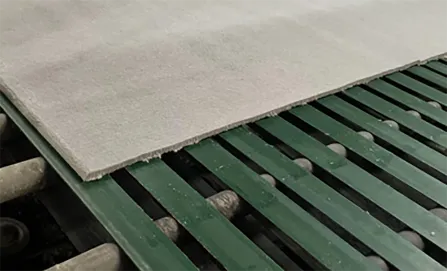Jan . 01, 2025 13:23 Back to list
Understanding Tile Grid Ceiling Design and Its Applications in Modern Architecture
Understanding Tile Grid Ceiling A Comprehensive Overview
Tile grid ceilings, often referred to as drop ceilings or suspended ceilings, are a staple in commercial and residential architecture. These ceilings consist of a framework that supports acoustic tiles or panels, providing both aesthetic appeal and functional benefits. In this article, we will explore the components, advantages, installation methods, and maintenance of tile grid ceilings, shedding light on their popularity in modern construction.
Components of Tile Grid Ceilings
A typical tile grid ceiling is composed of two primary elements the grid system and the ceiling tiles itself. The grid system is usually made from lightweight metal or plastic, creating a framework that suspends the ceiling tiles below the structural ceiling. The grid consists of main runners, cross tees, and wall angles, which work together to create a grid layout that supports the tiles.
Ceiling tiles come in various materials, including mineral fiber, fiberglass, and metal, each offering unique aesthetic and acoustic properties. Tiles can be easily customized in terms of size, color, and texture, allowing designers to create a particular atmosphere or align with a specific design theme.
Advantages of Tile Grid Ceilings
1. Acoustic Properties One of the most significant benefits of tile grid ceilings is their ability to absorb sound. Many tile materials are designed to reduce noise levels, making them ideal for spaces that require privacy, such as offices, conference rooms, and educational facilities. The tiles can help to dampen noise from conversations, machinery, and foot traffic.
2. Aesthetic Flexibility Tile grid ceilings offer a modern and clean appearance that can enhance the visual appeal of a room. With an array of tile designs available, from sleek and minimalistic panels to ornate, decorative ceilings, these systems can complement various architectural styles.
3. Ease of Installation and Maintenance Installing a tile grid ceiling is relatively straightforward, making it a preferred choice for many builders and renovators. Since the system hangs below the structural ceiling, it allows for easy access to plumbing, electrical wiring, and HVAC systems above. Additionally, individual tiles can be replaced without the need for extensive renovations, simplifying maintenance.
4. Energy Efficiency Certain ceiling tiles are designed to enhance energy efficiency by improving insulation, reducing heating and cooling costs. This can lead to a more sustainable building environment and lower utility bills.
5. Hiding Unsightly Elements A tile grid ceiling can effectively conceal exposed ductwork, wiring, and pipes, creating a cleaner look in industrial or commercial spaces. This ability to mask mechanical systems is particularly valued in facilities where aesthetics are crucial.
tile grid ceiling

Installation Methods
The installation of a tile grid ceiling typically involves several steps
1. Planning and Measurement Accurate measurement of the room dimensions is essential for determining the appropriate grid layout. This step ensures that the tiles will fit correctly within the designated space.
2. Framework Construction Once the measurements are taken, the main runners and cross tees are installed according to the planned layout. The grid must be level to ensure that the ceiling tiles fit properly.
3. Tile Placement After the grid framework is complete, the ceiling tiles are placed into the grid. This step is generally quick and allows for instant transformations of the room's appearance.
4. Finishing Touches Once the tiles are installed, any necessary finishing touches, such as trimming or painting the grid, can be applied.
Maintenance of Tile Grid Ceilings
Maintaining a tile grid ceiling is relatively low-effort. Regular cleaning can help remove dust and debris that accumulates on the surface. In case of any damages or stains, individual tiles can be replaced easily without disrupting the entire system. Additionally, regular inspections can ensure that the grid framework remains intact and secure.
Conclusion
Tile grid ceilings are an excellent solution for anyone seeking to enhance the functionality and aesthetics of a space. With their sound-absorbing qualities, ease of installation, and versatile design options, they have become increasingly popular in both commercial and residential settings. Whether you are remodeling an office or designing a new home, a tile grid ceiling can provide the perfect combination of form and function.
-
Quality Ceiling Trap Doors & Access Panels | Easy & Secure AccessNewsAug.30,2025
-
Durable Ceiling T Grid Systems | Easy InstallationNewsAug.29,2025
-
PVC Gypsum Ceiling: Durable, Laminated Tiles for Modern SpacesNewsAug.28,2025
-
Pvc Gypsum Ceiling Is DurableNewsAug.21,2025
-
Mineral Fiber Board Is DurableNewsAug.21,2025
-
Ceiling Tile Clip Reusable DesignNewsAug.21,2025







